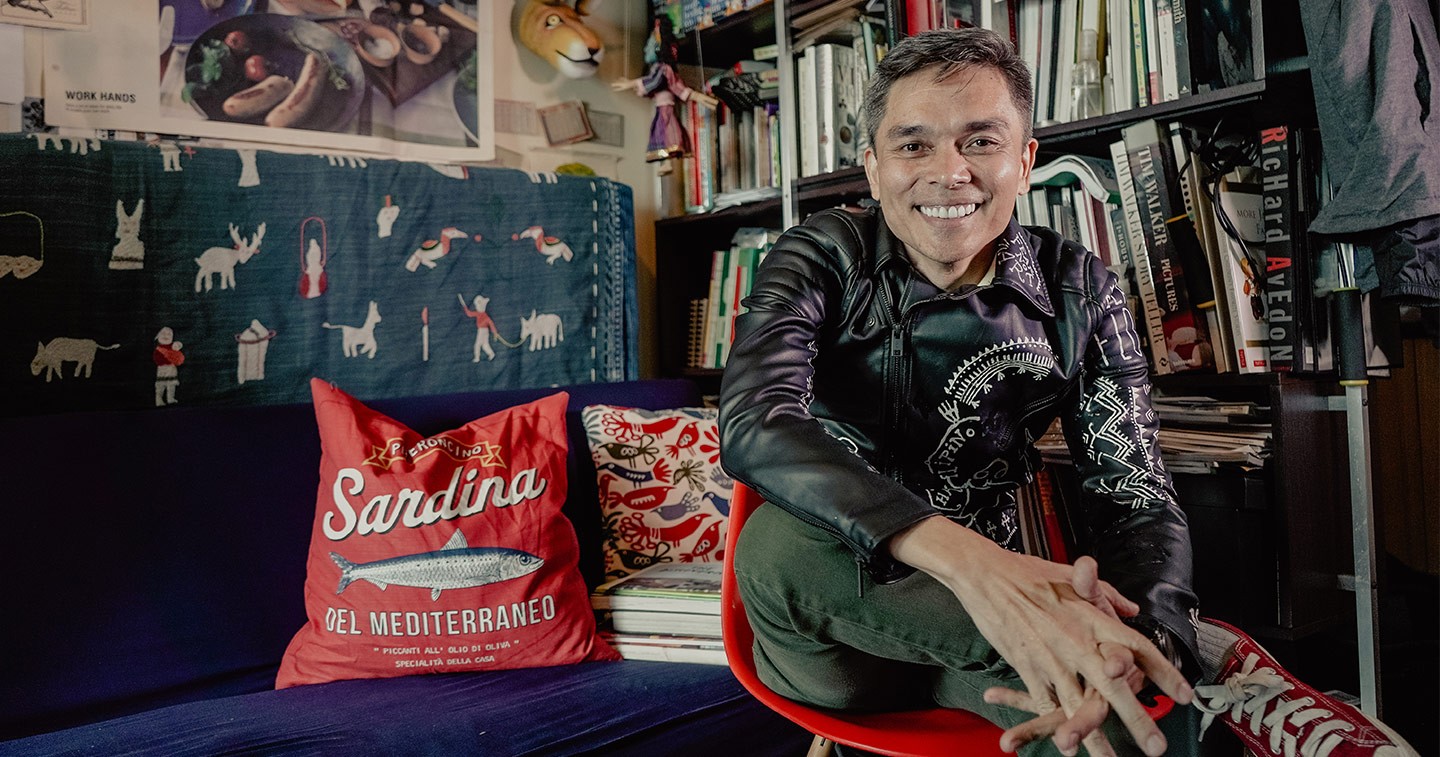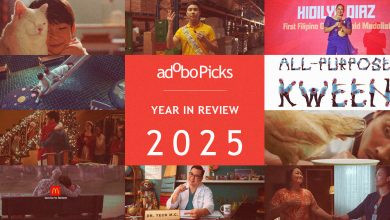MANILA, PHILIPPINES — We are sitting in the middle of Robert Alejandro’s creative studio one morning, finding refuge from the torrential downpour. Filled with objects that were made or gifted with love, all sparking joy and nostalgia, the room coaxes the ease of being in an old friend’s home. Perhaps it’s the whimsical drawings and craftwork of animals and nature adorning the walls or the enviable shelves of art books and keepsakes from various travels that convey it as an unlikely workspace for designing shopping malls and entertainment centers.

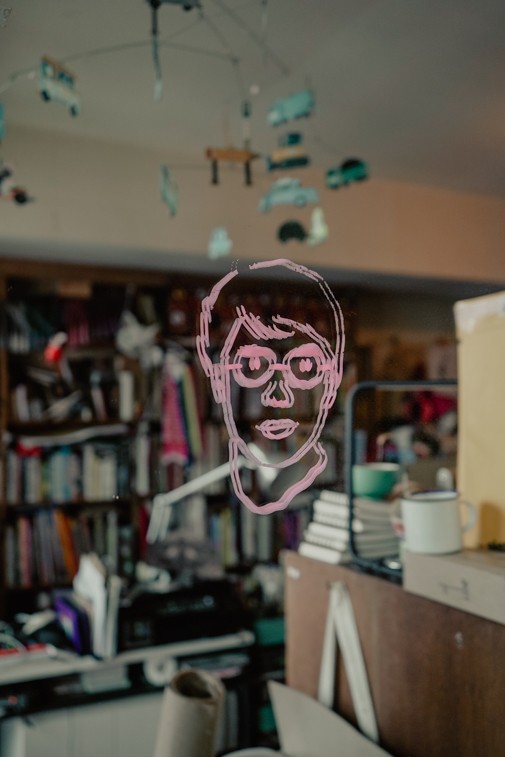
Robert shared his story with us about his traverse from a children’s book illustrator to a space designer and the various adventures in between. Like us, he had braved the treacherous weather and was drenched during his commute to meet us; unlike us, he appears unruffled by the quintessential MRT chaos. Maybe it’s the excitement brought on by an upcoming trip to Latin America (he’s been traveling more — and loving it), or that his recent work has been reaping rewards (the new Robinsons Galleria Mall in San Pedro, Laguna recently opened its doors), or that a slew of projects will be waiting for him when he returns (much to be grateful for.) Punctuating each anecdote with high octanes and deep lows and sparing us from the prosaic, Robert weaved the entire conversation with a beam of energy that is both infectious and galvanizing.
When Robert presented his designs for a children’s theme park to one of the Philippines’ largest real estate developers a couple of decades ago, he had neither a diploma in architecture nor a portfolio of design projects to vouch for his skills. All he had brought with him, quite literally, was a stack of illustration boards and an endless stream of ideas and enthusiasm.
“They were looking at me like, ‘Who is this young person, and why is he telling us to change things?’” laughed Robert, as he recalled how he had gone from helping out with the working designs made by an existing architectural team to actually presenting his own ideas to the client and taking on the project as a result. “I had no intention of getting that project; a friend and former client from my agency days had asked me to help out with the design of one of their tenants — not even for the theme park yet,” he shared. “I was happy to help, and I came over for a meeting to check it out. Then they showed me the full plan of the project and, of course, I gave my honest feedback.”
The outcome? Not only did the team invite him to present his ideas to the top bosses, but his ideas were approved, and he was commissioned to design the entire theme park, known as Glico’s Great Adventure, in what used to be the Quad malls (now Glorietta) in Ayala Center.
“You cannot imagine how excited I was. But after I got the project, the massive scale of it all sunk in and I thought to myself, ‘What did I just get myself into?’ I had never studied or worked in architecture and designing spaces, and suddenly — I HAD TO DESIGN A THEME PARK!” He chuckled at the memory. “But, yes, exactly: a theme park that I could play with at the tips of my fingers and with my own imagination —literally! I said to myself, ‘Keep cool, Robert, it’s just like drawing a big popup book.”
Some might see this as having an inexhaustible supply of confidence and sheer optimism, enough to carry you through all the levels of faking it ‘til you make it. However, as many would probably attest to the commitment and relentless passion Robert has poured into each project for the last two decades, it’s all of that rolled into something so much more. Robert has stayed loyal and true to the unbridled imagination of his youth, enabling him with an ability that many creatives lose in the throes of adulthood: an unwavering eye for possibility and opportunity.

Robert wasn’t exactly starting with zero design acumen when he pitched his designs for the theme park. Back in the early nineties, when Metro Manila was just discovering its fascination for gargantuan shopping malls, a decades-old, family-owned craft stationery brand known as Papemelroti was expanding its stores into the mainstream commercial landscape. The first Robinsons Galleria mall had just opened at that time, towering over a relatively flat Ortigas Avenue. It offered the potential for the brand to be beloved by crafty folk with a penchant for the rustic and quirky. With Papemelroti being their family’s business, Robert practically grew up in the main shop and felt it was time to add some life and color to the brand’s aesthetic.
“For as long as I could remember, it was all brown, always brown — and more brown!” recalled the designer, who was just recently named the company’s President. His mother eventually allowed him to take a stab at designing the new Robinsons Galleria branch. The move proved to be effective and Robert would eventually design the rest of the Papemelroti stores, trading in the original dark wood for a lighter and brighter look. Forwarding 20 years and several branches later, the Papemelroti brand is thriving at 50 years old with its iconic craft paper stationery products and rustic aesthetic that manages to be both timeless and appealing to a younger generation.
An internet search may yield all of the above and about two decades worth more of stories chronicling the 54-year-old artist’s journey through different creative mediums and industries (such as a 15-year ride as a correspondent for The Probe Team, and as a host for the television show Art Is-kool). After graduating from the University of the Philippines’ College of Fine Arts, he was hired by Cacho Publishing House to draw for children’s books, which would ultimately be the heart and soul of his career. In 1991, he banded with a group of friends to form Ilustrador ng Kabataan (INK) in the hope of addressing a need to organize and cultivate a sense of community among artists and illustrators of children’s books, with the belief that this would help develop the talent and industry in the Philippines. At present, the organization continues to grow and thrive each year as Robert and his co-founders contemplate the next steps still needed to elevate the quality of artworks from the country. (The dream is to see the works of local illustrators make it to the Bologna Children’s Book Fair someday.)
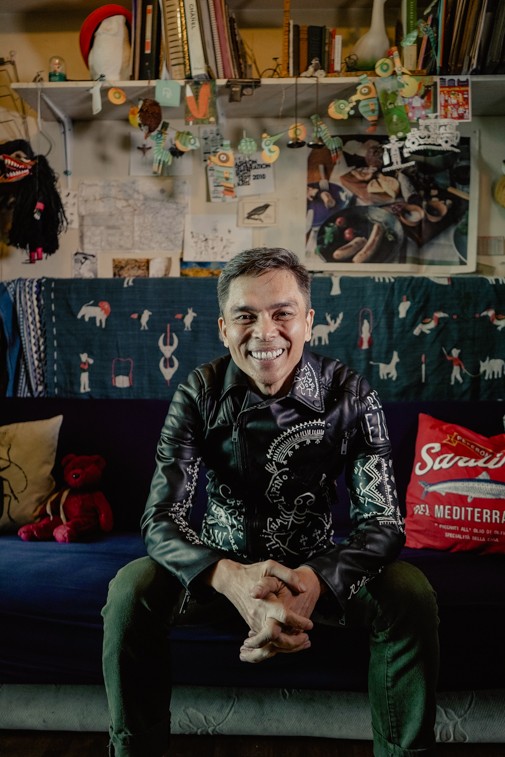
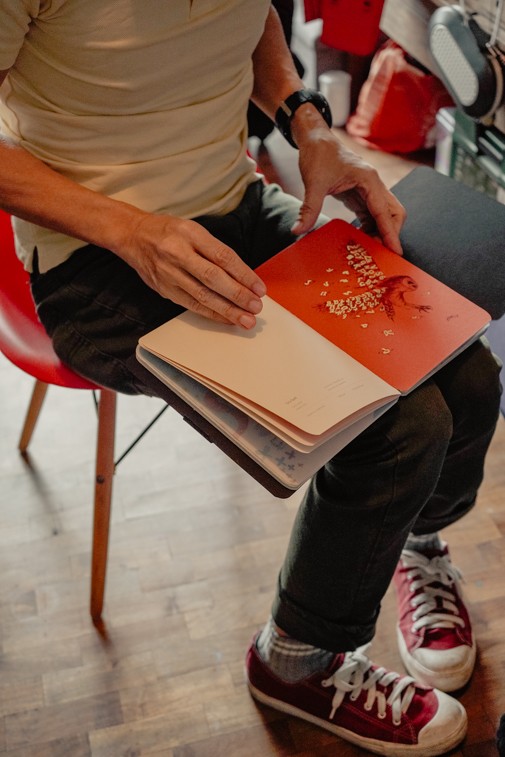
After illustrating for children’s books and greeting cards, Robert found himself in advertising as an art director for global powerhouse agency McCann Erickson. He recalled he was very young and introverted then, seldom speaking up during pitch meetings. This might be hard to picture today for someone known for his candor and infectious enthusiasm through the years. Realizing that he thrived best when creating and working independently, he ventured into the freelance world and soon found himself flooded with project offers, including the Glico’s theme park pitch. Among his most notable space design projects through the years include the toy store Toy Town, the Time Out video arcades, the signage and facade of Starmall when it was reincarnated from Manuela, as well as the recent redesign of Robinsons Galleria Ortigas’ food court (rebranded as Eat Street), among others.
Robert shared that he wasn’t really looking for more work when he was tapped by Robinsons Land last year to design zone areas for the Robinsons Galleria mall in San Pedro, Laguna, which stands upon a 3.8-hectare lot and holds a total of 115,000 square-meter in retail space. He was taking it easy, resting more, and taking fewer projects. Since Robert was diagnosed with cancer in 2017, he has consciously been putting more effort into his well-being. “After I let the news sink in, I made up my mind and decided I was not going to get chemotherapy,” he shared.

“I decided that I was going to make the most out of whatever time I had left and do all that I can to just enjoy it, to be happy. And that’s when I realized how unkind I’ve been to myself my whole life — I used to hate myself, being my own harshest critic, never allowing myself to indulge and enjoy leisure, probably because I didn’t really believe I deserved it… that I still needed to do more, so I just kept going and going and rarely ever took breaks or slept enough.” He shook his head, pausing with his thoughts. “My partner Jetro (Rafael, the chef and mastermind behind the restaurant Van Gogh is Bipolar) would often tell me, ‘Why do you keep treating yourself that way, as though you haven’t earned anything from all your hard work?”
It was also Jetro who encouraged him to take better care of himself by eating healthier and learning to relax more. “He has really been so supportive all this time, especially with helping me see that there’s so much to be happy about and grateful for in my life. I’ve learned to just take it one day at a time, to see the best of each moment, and let go of the little things that I used to obsess about. And you know what? Things are just so much lighter now; the opportunities and blessings just flow more freely than before, and I just can’t help but feel so, so grateful. I am, finally, having the time of my life.”

